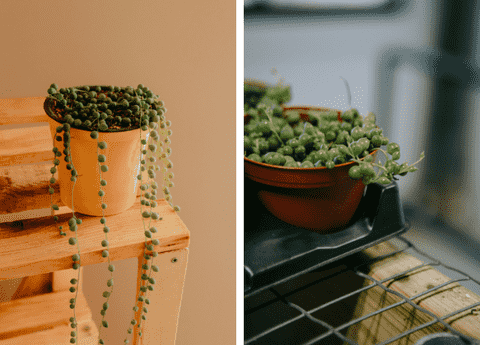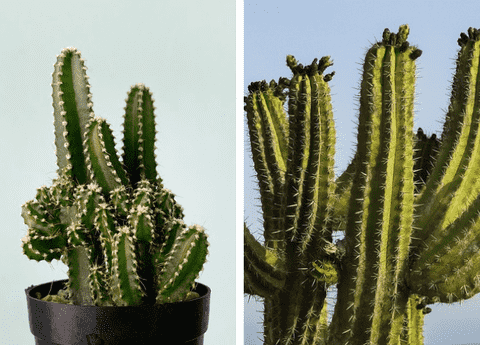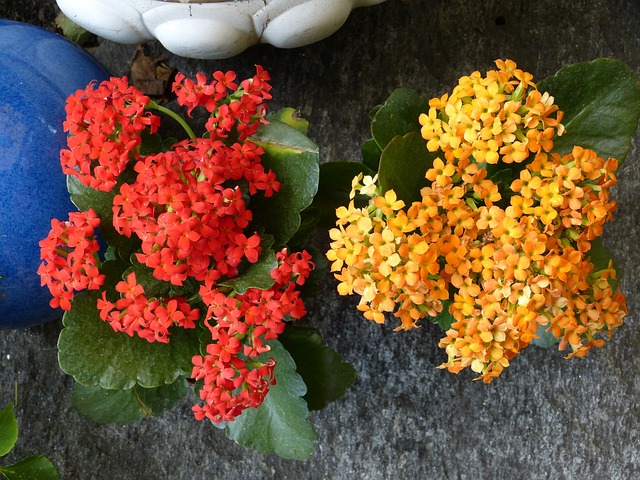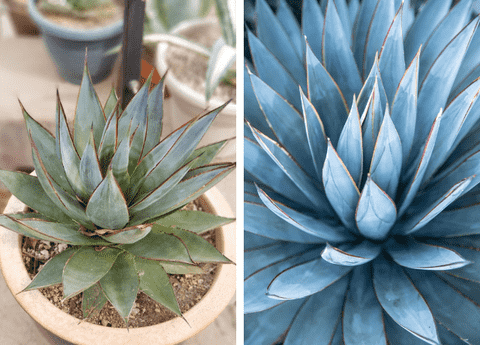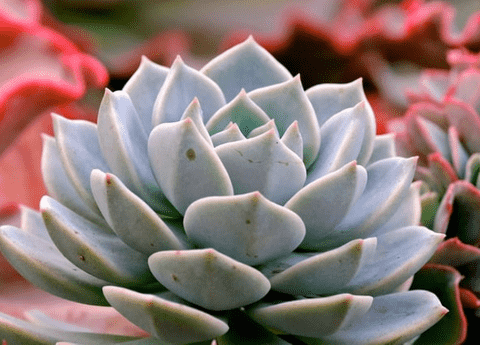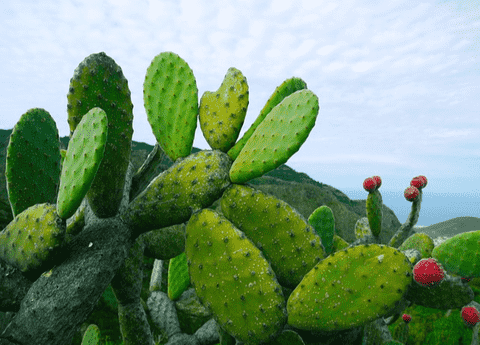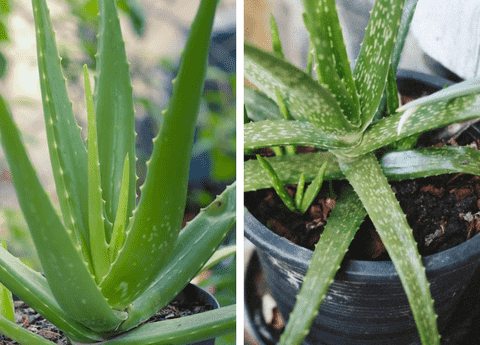String of Pearls: How to Grow and Care for String of Pearls Succulents
Indoor gardening offers a delightful escape into nature’s beauty, even within the confines of your home. Among the myriad of plants you can cultivate indoors, the String of Pearls succulent stands out with its unique, cascading strands of bead-like leaves. Perfect for both novice and seasoned plant enthusiasts, this trailing succulent not only adds an elegant touch to your decor but is also relatively easy to maintain. In this guide, we will delve into essential String of Pearls care tips, exploring everything from optimal growing conditions to effective watering practices. Read on to master the art of indoor gardening and learn how to grow String of Pearls successfully in your home.
Introduction to String of Pearls
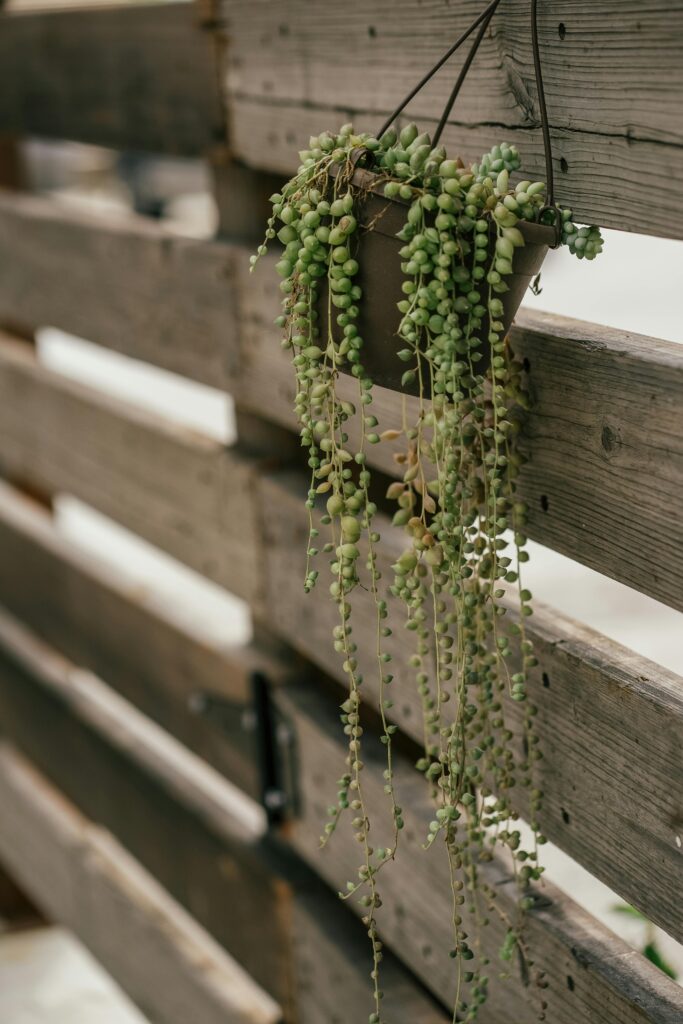
Unique Features of String of Pearls
String of Pearls, scientifically known as Senecio rowleyanus, is a distinctive succulent renowned for its spherical, pearl-like leaves that dangle gracefully from thin, trailing stems. These bead-like leaves are not just aesthetically pleasing; they serve a functional purpose by storing water, making the plant exceptionally drought-tolerant. This adaptation is crucial for its survival in arid environments. The plant’s cascading growth habit makes it an excellent choice for hanging baskets or as a trailing feature on shelves. Additionally, String of Pearls produces small, white, cinnamon-scented flowers that add to its charm, especially during the blooming season. Its unique appearance and relatively low maintenance requirements make it a favored choice among succulent enthusiasts and indoor gardeners alike. Understanding these features helps in providing the right care and creating an environment where the plant can thrive.
Benefits of Growing Trailing Succulents
Growing trailing succulents like String of Pearls presents several benefits for indoor gardeners. Firstly, their cascading growth pattern creates a visually stunning display, adding vertical interest to your home decor. They are ideal for small spaces since they can be hung in baskets or placed on elevated surfaces, making efficient use of vertical space. Additionally, trailing succulents are generally low maintenance, requiring less frequent watering due to their water-storing capabilities. This makes them perfect for busy individuals or those new to indoor gardening. These plants also improve indoor air quality by releasing oxygen and absorbing toxins, contributing to a healthier living environment. Moreover, their unique appearance can serve as a conversation starter, making them a delightful addition to any indoor plant collection. Overall, trailing succulents combine aesthetic appeal with practical benefits, enhancing both the beauty and health of your indoor space.
Essential String of Pearls Care Tips
Ideal Lighting and Temperature
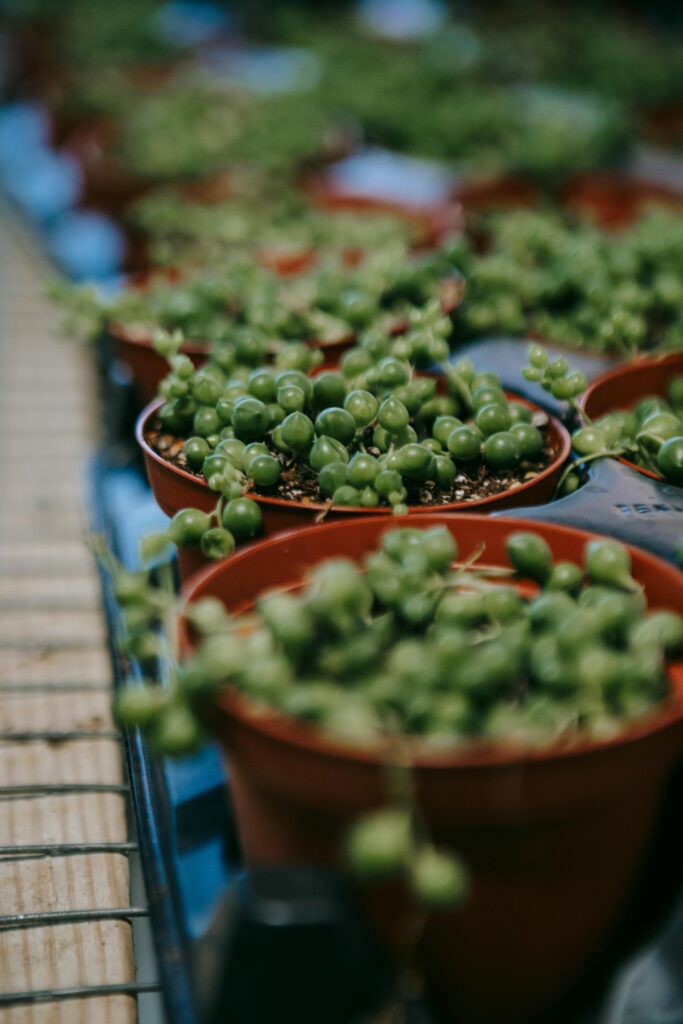
To grow String of Pearls successfully, providing the right lighting and temperature is crucial. These succulents thrive in bright, indirect light. Place them near a south or west-facing window where they can receive ample sunlight without being exposed to direct rays, which can scorch their delicate leaves. If natural light is inadequate, think about using a grow light to meet their needs.
In terms of temperature, String of Pearls prefers a warm environment. Ideally, maintain indoor temperatures between 70-80°F (21-27°C) during the growing season. In the winter, they can tolerate slightly cooler temperatures, down to about 50-55°F (10-13°C), but avoid exposing them to frost or extreme cold. Consistent, appropriate lighting and temperature conditions will ensure your String of Pearls remains healthy and vibrant, contributing to its long-term growth and vitality.
Watering and Soil Requirements
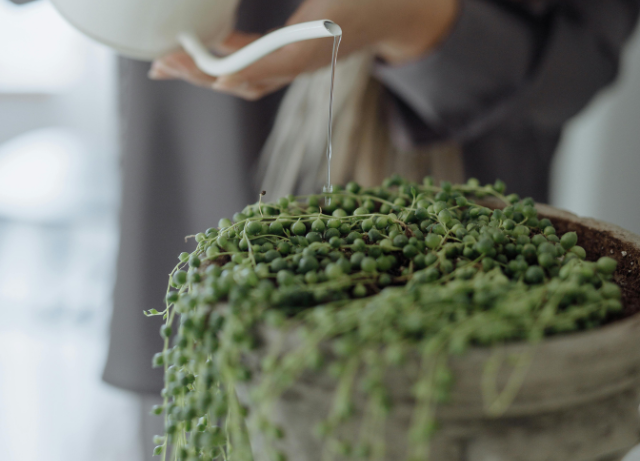
Proper watering and soil conditions are vital for effective String of Pearls care. These succulents prefer a ‘soak and dry’ watering method, meaning you should thoroughly water them and then allow the soil to dry out completely before watering again. Excessive watering is a common mistake that can cause root rot. Therefore, it’s essential to use well-draining soil, such as a cactus or succulent mix, which helps prevent excess moisture retention.
When it comes to watering frequency, it varies with the seasons. During the growing season (spring and summer), water your String of Pearls every two to three weeks. In the dormant period (fall and winter), reduce the watering frequency to once a month or even less. Be sure to check the soil moisture level before watering to prevent overwatering. By adhering to these watering and soil guidelines, you can maintain a thriving, healthy String of Pearls in your indoor garden.
Fertilizing and Pruning Tips
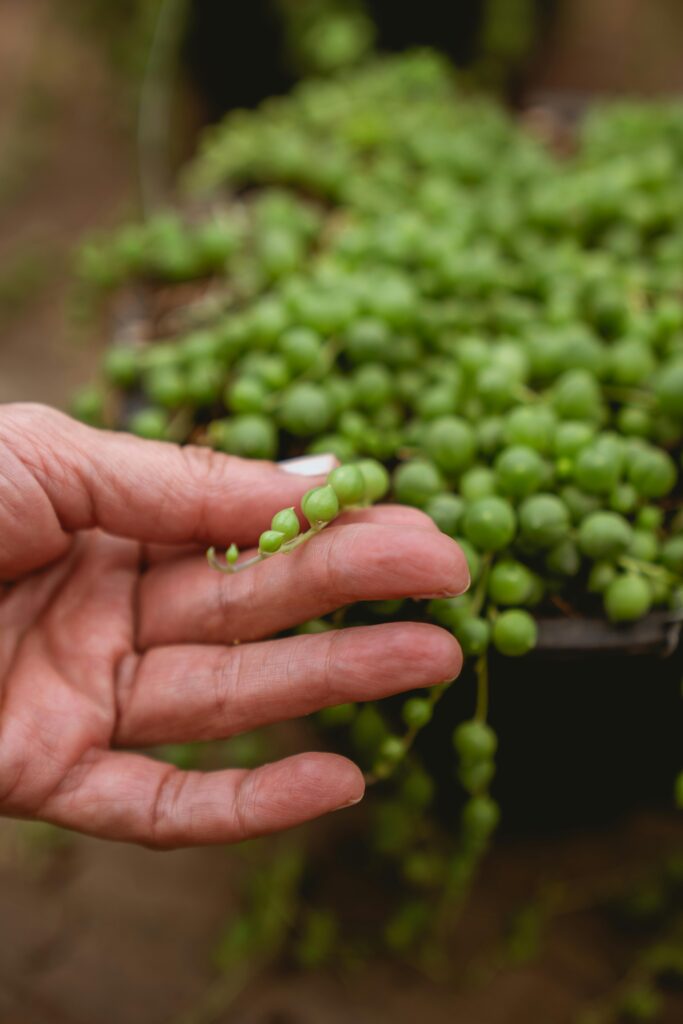
Fertilizing and pruning are key aspects of String of Pearls care that contribute to its overall health and appearance. During the growing season, from spring to early fall, feed your String of Pearls with a balanced, water-soluble fertilizer diluted to half strength. Fertilize once a month to provide essential nutrients that support vigorous growth. Avoid fertilizing during the dormant winter months, as the plant’s nutrient requirements decrease.
Pruning is equally important to maintain the plant’s shape and encourage new growth. Trim any leggy or sparse stems to promote a fuller appearance. Utilize clean, sharp scissors or pruning shears to make accurate cuts just above the leaf node. Pruned stems can be propagated to grow new plants, adding to your indoor garden collection. Regular pruning not only keeps your String of Pearls looking neat but also helps in removing any dead or unhealthy parts, ensuring a robust, thriving plant.
Common Problems and Solutions
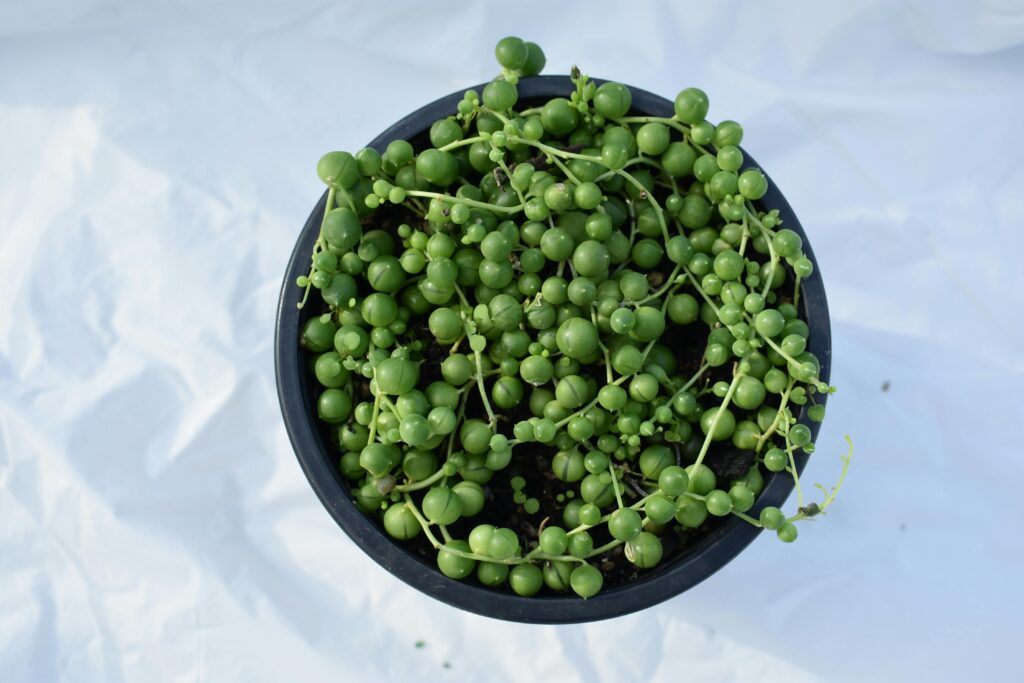
Troubleshooting Watering Issues
Watering issues are common when caring for String of Pearls, but they can be resolved with careful observation and adjustments. Overwatering is often indicated by mushy, translucent leaves or stem rot. To address this, reduce watering frequency and ensure the plant is in well-draining soil. If root rot is severe, you may need to trim affected roots and repot the plant in fresh soil.
Underwatering, on the other hand, manifests as shriveled or puckered leaves. If you notice these signs, increase the watering frequency but make sure the soil dries out between waterings. Consistently dry soil may also suggest that the plant is in a pot without drainage holes, which is crucial for preventing water from stagnating around the roots. Adjusting your watering practices based on these symptoms will help you maintain a healthy String of Pearls and prevent common watering-related problems.
Dealing with Pests and Diseases
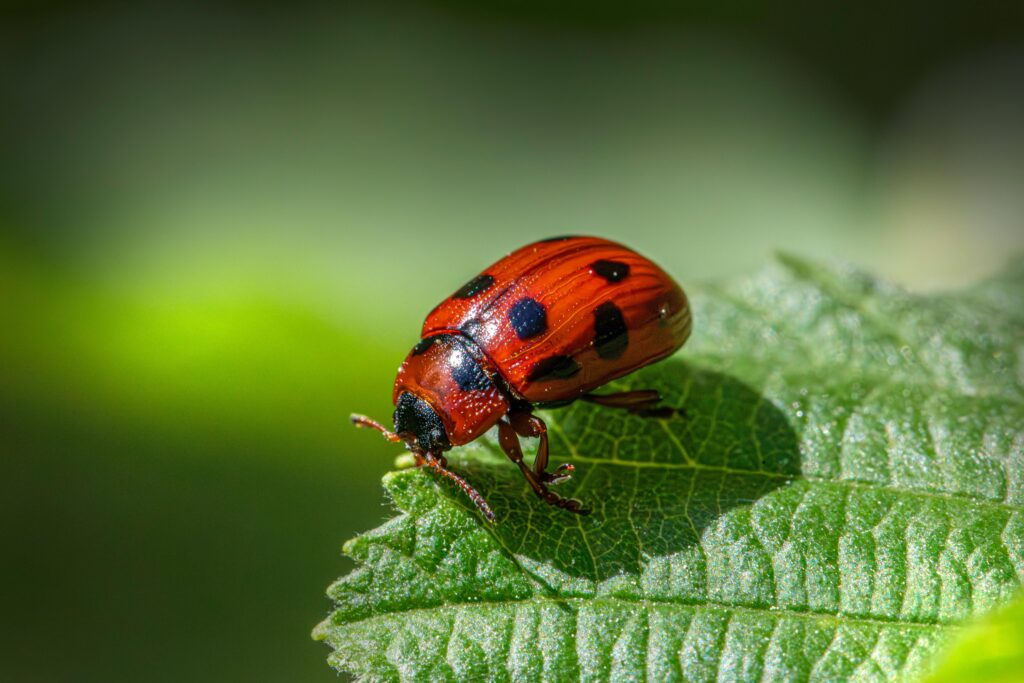
Dealing with pests and diseases is a crucial part of String of Pearls care. Common pests include mealybugs, spider mites, and aphids, which can damage the plant by sucking its sap. To combat these pests, regularly inspect your plant and remove any visible insects using a cotton swab dipped in rubbing alcohol. For more severe infestations, consider using insecticidal soap or neem oil, applied according to the product’s instructions.
Diseases such as root rot and fungal infections can also affect String of Pearls, primarily due to overwatering or poor ventilation. To avoid these problems, make sure to follow proper watering practices and ensure good air circulation around the plant. If you notice signs of disease, such as discolored or mushy leaves, remove the affected parts immediately and adjust your care routine. Addressing pests and diseases promptly will help keep your String of Pearls healthy and vibrant, ensuring it continues to thrive in your indoor garden.

